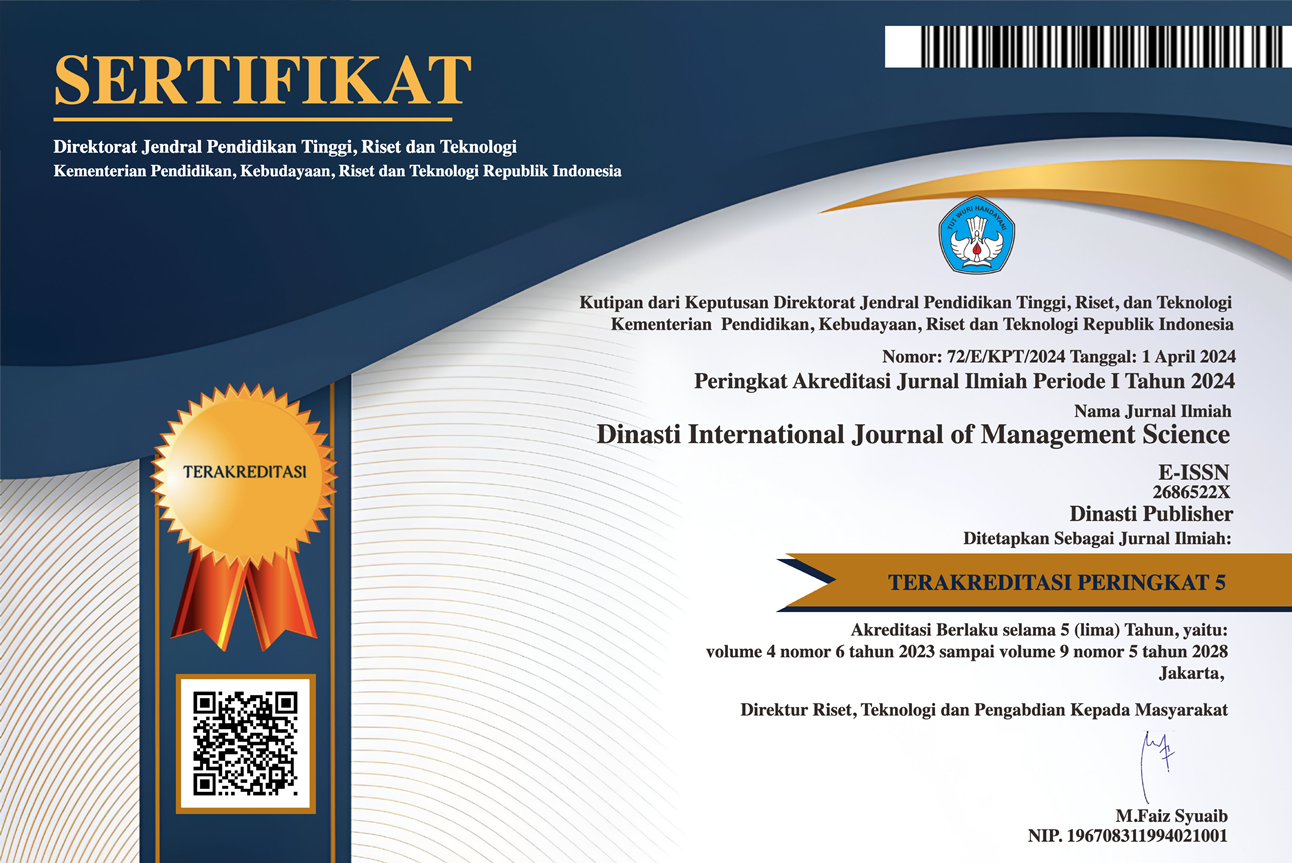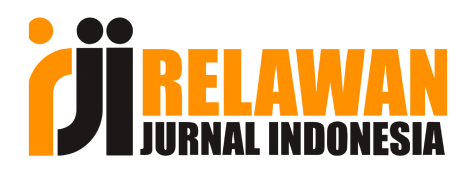The Future of Management Theory: A Review of the Literature on Innovation, Sustainability, and Transformative Leadership
DOI:
https://doi.org/10.38035/dijms.v6i5.4613Keywords:
Innovation, Sustainability, Transformative Leadership, Management Theory, VUCAAbstract
In the face of global uncertainty and increasingly complex business dynamics, innovation, sustainability and transformative leadership are three key pillars that are indispensable in the development of future management theory. This research aims to explore the integration of these three elements in management theory, as well as to identify gaps in the existing literature related to this topic. The main question to be answered is how innovation, sustainability, and transformative leadership can support each other and form an adaptive managerial framework in the VUCA (Volatility, Uncertainty, Complexity, Ambiguity) era. The method used is a qualitative approach with in-depth literature analysis of previous research and relevant theoretical studies. The results showed that there is a significant relationship between the three elements in forming a more adaptive and sustainable managerial model. The research also found that there are still gaps in the integration of the three elements in one managerial framework, as well as a lack of longitudinal and cross-cultural studies. The conclusion of this study is that future management theory development should pay attention to a holistic approach that integrates innovation, sustainability, and transformative leadership. Future research is recommended to develop case study-based integrative models and explore the role of technology in shaping new leadership.
References
Bass, B. M., & Avolio, B. J. (1994). Improving organizational effectiveness through transformational leadership. SAGE Publications.
Bass, B. M., & Riggio, R. E. (2006). Transformational Leadership (2nd ed.). Psychology Press.
Bennett, N., & Lemoine, G. J. (2014). What a difference a word makes: Understanding threats to performance in a VUCA world. Business Horizons, 57(3), 311–317. https://doi.org/10.1016/j.bushor.2014.01.001
Birkinshaw, J., Hamel, G., & Mol, M. J. (2014). Management innovation. Academy of Management Review, 33(4), 825–845. https://doi.org/10.5465/amr.2008.0452
Chesbrough, H. W. (2003). Open innovation: The new imperative for creating and profiting from technology. Harvard Business School Press.
Christensen, C. M. (1997). The innovator's dilemma: When new technologies cause great firms to fail. Harvard Business Review Press.
Eccles, R. G., Klimenko, S., & Holt, T. (2020). The investor revolution: Shareholders are getting serious about sustainability. Harvard Business Review, 98(3), 106–116. https://hbr.org/2020/05/the-investor-revolution
Eisenbeiß, S. A., & Boerner, S. (2013). A double-edged sword: Transformational leadership and individual creativity. British Journal of Management, 24(1), 54–68. https://doi.org/10.1111/j.1467-8551.2011.00786.x
Elkington, J. (1998). Cannibals with forks: The triple bottom line of 21st-century business. New Society Publishers.
Heifetz, R., Grashow, A., & Linsky, M. (2009). The practice of adaptive leadership: Tools and tactics for changing your organization and the world. Harvard Business Press.
Hendayana, Y., El-Kafafi, S., Waskito, M., & Faeni, D. P. (2024). Business Networking, Innovation, and Firm Competitiveness: The Case of Handicraft Industry in Indonesia. Integrated Journal of Business and Economics, 8(2), 129. https://doi.org/10.33019/ijbe.v8i2.924
McKinsey & Company. (2023). Reimagining organizations for a post-pandemic world. Retrieved from https://www.mckinsey.com
Nambisan, S., Wright, M., & Feldman, M. (2019). The digital transformation of innovation and entrepreneurship: Progress, challenges and key themes. Research Policy, 48(8), 103773. https://doi.org/10.1016/j.respol.2019.03.018
O'Reilly, C. A., & Tushman, M. L. (2004). The ambidextrous organization. Harvard Business Review, 82(4), 74–81. https://hbr.org/2004/04/the-ambidextrous-organization
Sabarini, N. E., & Hendayana, Y. (2025). Membangun Daya Saing yang Kuat: Studi tentang Inovasi, Kepemimpinan, dan Kemampuan Beradaptasi di Kalangan. 4(3), 149–159
Tsoukas, H., & Chia, R. (2002). On organizational becoming: Rethinking organizational change. Organization Science, 13(5), 567–582. https://doi.org/10.1287/orsc.13.5.567.7810
Uhl-Bien, M., & Arena, M. (2018). Leadership for organizational adaptability: A theoretical synthesis and integrative framework. The Leadership Quarterly, 29(1), 89–104. https://doi.org/10.1016/j.leaqua.2017.12.009
World Economic Forum. (2024). Global Risks Report. Retrieved from https://www.weforum.org/reports/global-risks-report-2024
Wulandari, S., Manurung, A. H., & Hendayana, Y. (2025). Determinants of Employee Performance Are Mediated by Productivity University in Jakarta. Journal of Ecohumanism, 4(1), 121–133. https://doi.org/10.62754/joe.v4i1.4087
Downloads
Published
How to Cite
Issue
Section
License
Copyright (c) 2025 Gerson Manurung, Yayan Hendayana

This work is licensed under a Creative Commons Attribution 4.0 International License.
Authors who publish their manuscripts in this journal agree to the following conditions:
- The copyright on each article belongs to the author(s).
- The author acknowledges that the Dinasti International Journal of Management Science (DIJMS) has the right to be the first to publish with a Creative Commons Attribution 4.0 International license (Attribution 4.0 International (CC BY 4.0).
- Authors can submit articles separately, arrange for the non-exclusive distribution of manuscripts that have been published in this journal into other versions (e.g., sent to the author's institutional repository, publication into books, etc.), by acknowledging that the manuscript has been published for the first time in the Dinasti International Journal of Management Science (DIJMS).
















































